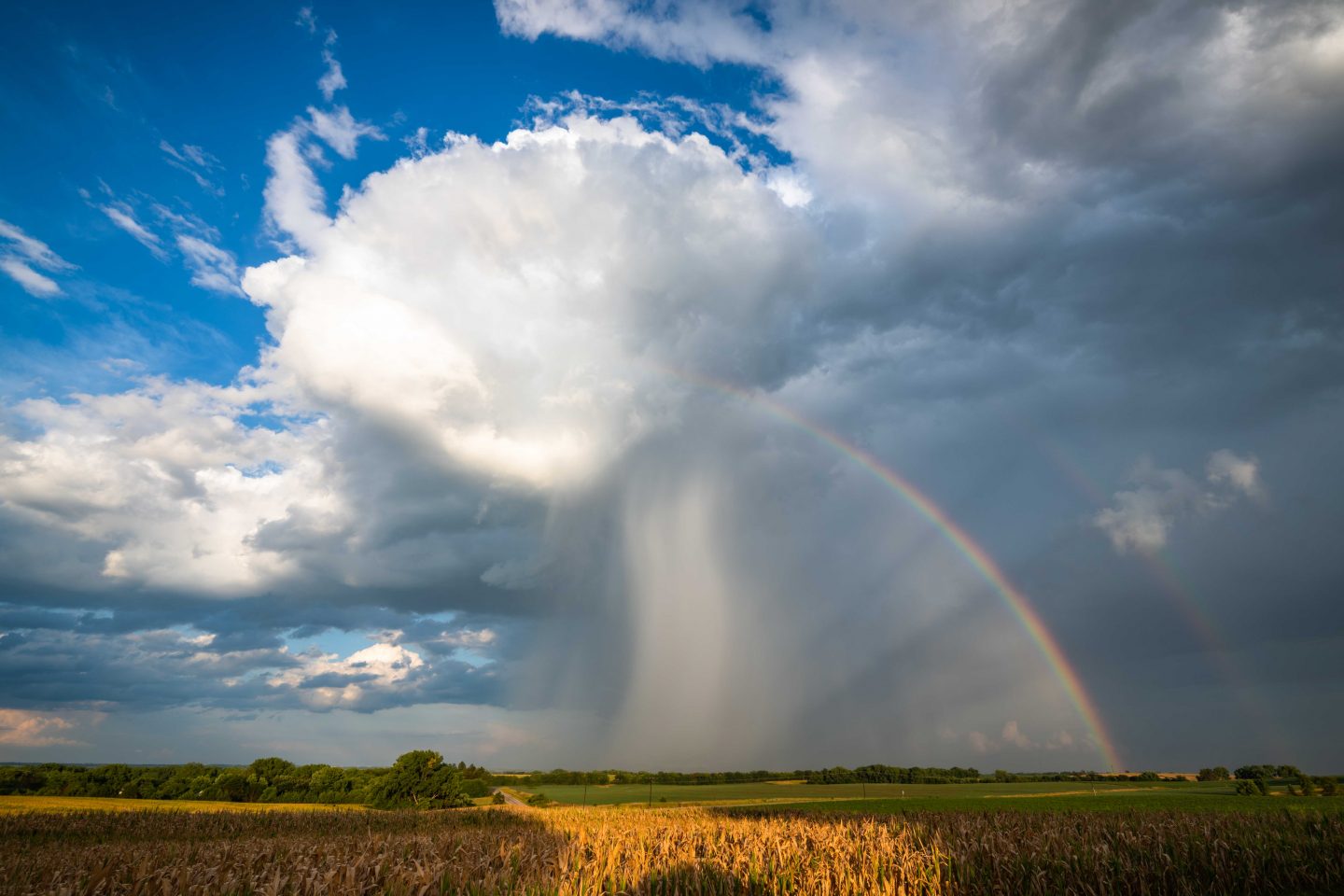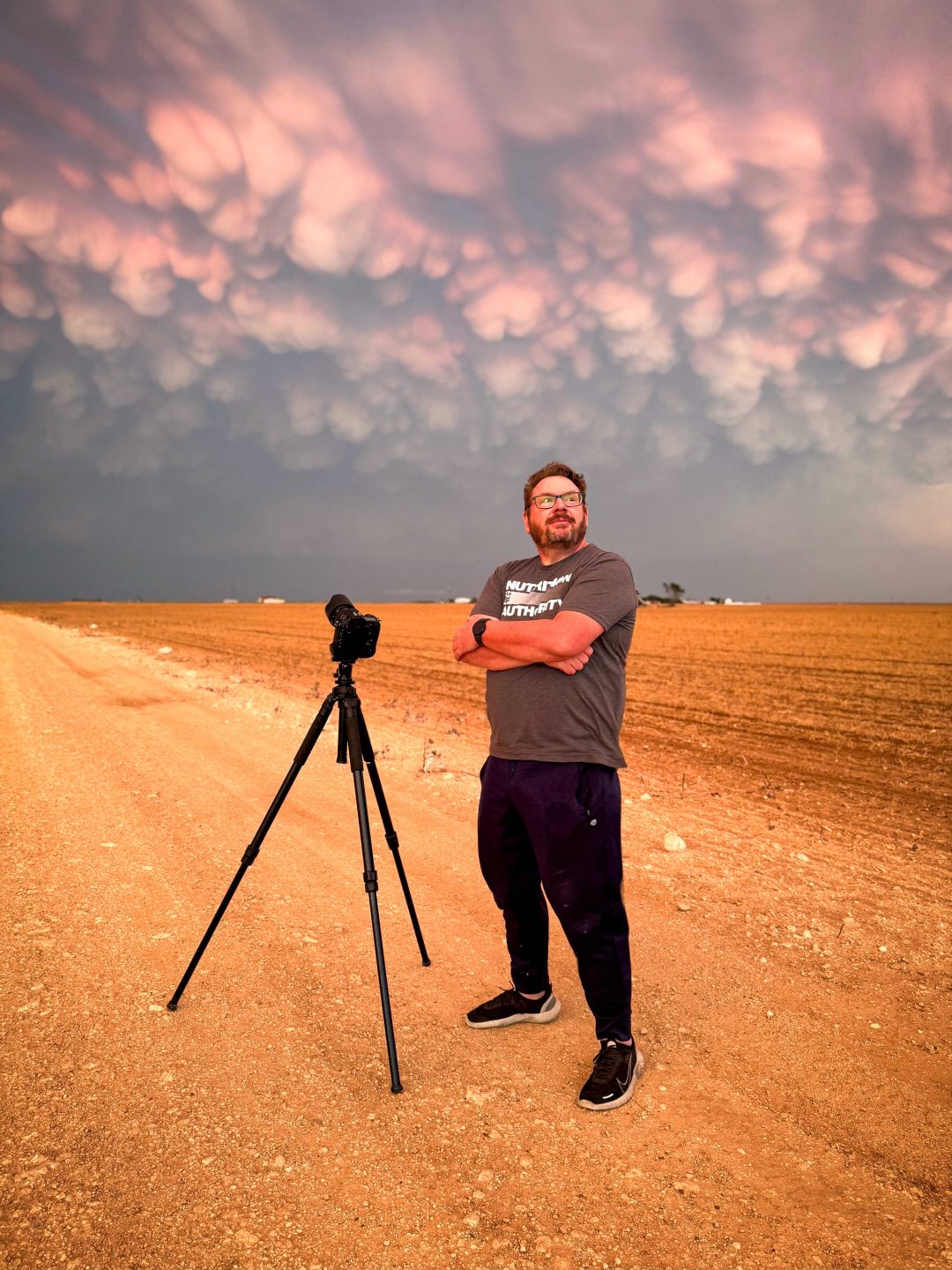
By Renae Blum
Photos by Matt Hollamon
When he was 46 years old, Matt Hollamon saw his first tornado — and was immediately hooked.
Invited to tag along on a friend’s storm chasing excursion in Kansas, Hollamon found himself gazing at a storm “that looked like a spaceship,” he said. “It was just being in that position — hearing the tornado sirens going off in this little town. It was such a cool experience.”
A lifelong Nebraskan, Hollamon lives in Martell and had been taking pictures for a couple of years prior to this. He already knew he loved photographing the sky, especially sunsets and lightning. But this wild evening in 2016 introduced him to something new — the art of storm chasing. And he hasn’t stopped since.
Today, Hollamon estimates he’s seen about 80 tornadoes — though tornadoes aren’t necessarily the goal. “I’m kind of a structure junkie,” he said. “I like a storm that looks like a spaceship. When the wind carves out something that has those layers on it and it looks like a stack of pancakes, I love that.”
The immensity of these supercells leaves him in awe. “They go 50,000 feet in the air at the cloud tops. It makes you feel insignificant, like there’s something bigger out there,” he said. “I don’t feel like I have to go to church to be in church.”
For Hollamon, photography and storm chasing is a vital part of life — the way he recharges from work as a nurse at Tabitha Hospice in Lincoln.
“The job that I do, it’s a high burnout deal. I’ve done it for five years,” Hollamon said. “And if you last five years doing what I do, you have to be able to take care of yourself. … I need my photography for me, as much as anything else.”

Working full-time means it isn’t easy to find time for storm chasing. Hollamon finds opportunities where he can and each spring, usually in May, he tries to take a two- or three-week “chase-cation.”
During that time, Hollamon might put as many as 8,000 miles on his vehicle, hopping from Oklahoma one day to Colorado the next, sticking mostly to the Great Plains. He chases alongside a good friend and fellow photographer he met on Instagram, Justin Snead.
While Hollamon knows some photographers who chase storms solo, he prefers having a chase partner. “I think it’s a big advantage,” he said. “I have the utmost trust in him. I know that he’s going to keep us safe, and I’m going to keep us safe, too.”
Strangely enough, the storms themselves aren’t the most dangerous part of what he does. It’s the other drivers, Hollamon said — people out doing the same thing he’s doing.
“There are times in the spring where the weather’s pretty targeted to one area and you may have 2 or 3 thousand people on the road just chasing storms,” Hollamon said. “It gets wild.”
Road conditions and nearby lightning can also pose hazards. Asked how he balances the need for safety with getting a good shot, Hollamon said, “Safety first, because there’s no shot if you’re not safe.”
At the same time, he will admit to accepting some level of risk: “Sometimes you have to just risk it for the biscuit, so to speak.”

Hollamon insists he’s not an adrenaline junkie — or even much of a risk taker. “I’m pretty reserved. I’m not a big roller coaster rider,” he said. “I don’t chase storms for the adrenaline part of it. It’s the awe of nature — that’s what I do it for.”
Most of his best shots come from timelapses, something Hollamon began doing in 2017. His goal in the field is to capture seven to 10 seconds’ worth of images — enough for a good clip in an eventual storm chasing film.
Hollamon has created six timelapse films, each about five to 10 minutes long. They feature stirring music set over clips of dramatic skies and are among his proudest creations.
His most recent project, called “Finding the Light,” was his biggest challenge yet. A month after starting work on this project, tragedy struck: In August of 2023, Hollamon lost his youngest son, Trey. He was just 23 years old.
“Parents aren’t supposed to lose their kids,” Hollamon said, wiping away a tear. “It’s been really hard. … And it’s absolutely killed some of my creativity.”
When he began working on the project again, he did so with Trey in mind. “Kind of what I tried to convey, even with the quote at the start of the movie, was just a lot of light and dark. He was a real light,” Hollamon said. “And that part of it, as a photographer, that’s what we strive for. It’s chasing light.”

His work as a storm chaser and photographer has led to some bigger insights. “It shows me, more than anything, that we’re really not in control,” Hollamon said. “There’s bigger things at work.”
As a setting for revealing truths like this, Nebraska is special, he said. “I wouldn’t change where I live for anything. I love Nebraska,” Hollamon said.
Asked what suggestions he has for an aspiring storm chaser, Hollamon recommended educating yourself first. He and Snead use the National Weather Service to track storms, and “generally they’re very accurate,” Hollamon said.
But you’ll need to learn how to read models and know which models to trust, he said. Websites like Tornado Titans are a good starting place. Friends of his began a grassroots movement called Girls Who Chase, another solid resource. Beginning storm chasers can also book trips with tour companies and see their process.

“I kind of learned on the fly,” Hollamon said. “I went with experienced storm chasers to start with. If you know a storm chaser that’s experienced that you can get out with, that’s a great way to learn, too.”
Does he have a favorite storm? Honestly, no, Hollamon said. “Every storm is its own. They’re all relevant on their own terms.
“Man, I’ve seen some beautiful stuff,” he added. “So I’m lucky in that regard.”
To see more of Matt Hollamon’s work, visit him on Instagram, Facebook and Flickr. View his storm chasing films on Vimeo and YouTube.
